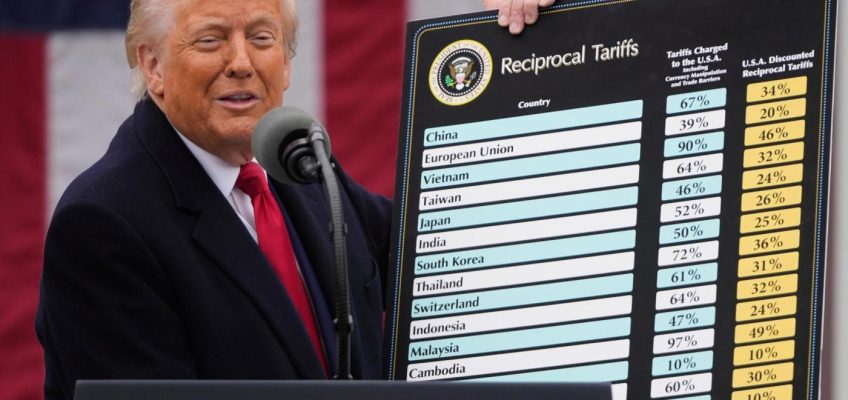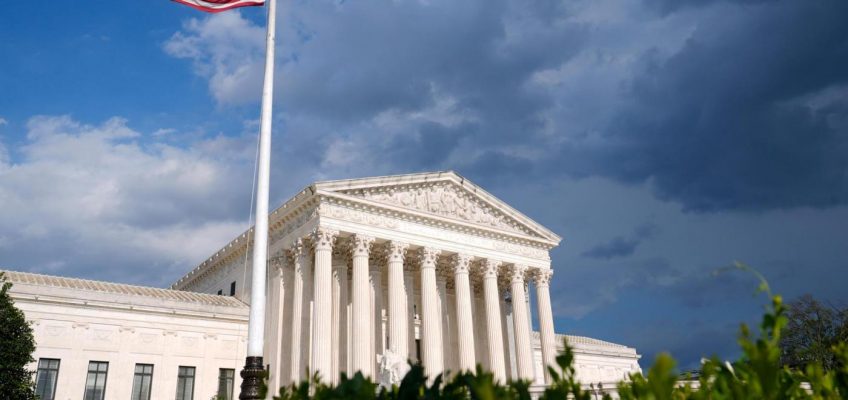By MARK SHERMAN, Associated Press
WASHINGTON (AP) — The Supreme Court on Monday rejected an appeal from Ghislaine Maxwell, the imprisoned former girlfriend of Jeffrey Epstein.
On the first day of their new term, the justices declined to take up a case that would have drawn renewed attention to the sordid sexual-abuse saga after President Donald Trump’s administration sought to tamp down criticism over its refusal to publicly release more investigative files from Epstein’s case.
Related Articles
US stocks hang near their records as tech keeps climbing
Federal judge temporarily blocks Trump administration from sending National Guard troops to Oregon
ICE ad blitz aims to lure local law enforcement officers to join Trump mass deportation efforts
Today in History: October 6, Anwar Sadat assassinated
Kristi Noem says ICE will be ‘all over’ the Super Bowl
Lawyers for Maxwell, a British socialite, argued that she never should have been tried or convicted for her role in luring teenage girls to be sexually abused by Epstein, a New York financier. She is serving a 20-year prison term, though she was moved from a low-security federal prison in Florida to a minimum-security prison camp in Texas after she was interviewed in July by Deputy Attorney General Todd Blanche.
As is their custom, the justices did not explain why they turned away the appeal.
Trump’s Republican administration had urged the high court to stay out of the case.
Maxwell’s lawyers contended that a non-prosecution agreement reached in 2007 by federal prosecutors in Miami and Epstein’s lawyers also protected his “potential co-conspirators” from federal charges anywhere in the country.
Maxwell was prosecuted in Manhattan, and the federal appeals court there ruled that the prosecution was proper. A jury found her guilty of sex trafficking a teenage girl, among other charges.
Maxwell’s trial featured accounts of the sexual exploitation of girls as young as 14 told by four women who described being abused as teens in the 1990s and early 2000s at Epstein’s homes.
Neither Maxwell’s lawyers nor the federal Bureau of Prisons has explained the reason for her transfer, but one of her lawyers, David Oscar Markus, has said she is “innocent and never should have been tried, much less convicted.” Markus also was the lead lawyer on her Supreme Court case.
Maxwell was interviewed by Blanche at a Florida courthouse. She was given limited immunity, allowing her to speak freely without fear of prosecution for anything she said except for in the event of a false statement. She repeatedly denied witnessing any sexually inappropriate interactions involving Trump, according to records released in August meant to distance the president from the disgraced financer.
Epstein was arrested in 2019 on sex trafficking charges and was accused of sexually abusing dozens of teenage girls. A month later, he was found dead in a New York jail cell in what investigators described as a suicide.
The Epstein case had consumed Trump’s administration following an announcement from the FBI and the Justice Department in July that Epstein had killed himself despite conspiracy theories to the contrary, that a “client list” that Attorney General Pam Bondi had intimated was on her desk did not actually exist, and that no additional documents from the high-profile investigation were suitable to be released.
The announcement produced outrage from conspiracy theorists and Trump supporters who had been hoping to see proof of a government coverup. That expectation was driven in part by comments from officials, including FBI Director Kash Patel and Deputy Director Dan Bongino, who on podcasts before taking their current positions had repeatedly promoted the idea that damaging details about prominent people were being withheld.
Patel, for instance, said in at least one podcast interview before becoming FBI director that Epstein’s “black book” was under the “direct control of the director of the FBI.”
But the Justice Department said its review of evidence in the government’s possession determined that no “further disclosure would be appropriate or warranted.” The department noted that much of the material was placed under seal by a court to protect victims and “only a fraction” of it “would have been aired publicly had Epstein gone to trial.”
Faced with fury from his base, Trump sought to quickly turn the page, shutting down questioning of Bondi about Epstein at a White House Cabinet meeting and deriding as “weaklings” supporters he said were falling for the “Jeffrey Epstein Hoax.”




